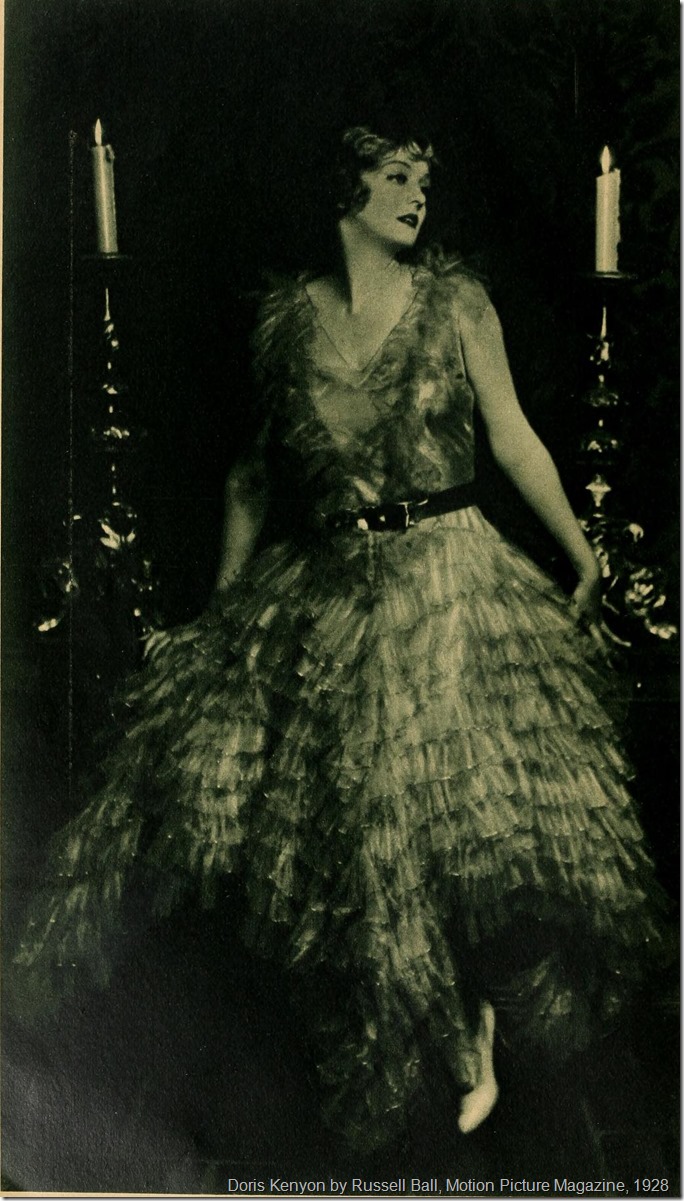
Doris Kenyon by Russell Ball, Motion Picture Magazine, 1928.
Motion picture still photography, just like any brand marketing, is all about creating a recognizable and attractive product appealing to consumers and leading to sales. Going a step further, stills photography’s aim is to fashion a fantastic dream world, taking people into the realm of fervid imagination. Russell Ball, one of the early masters of portraiture, composed alluring, glamorous images of stage and screen stars, accentuating a naturalistc romanticism in his work.
Born March 24, 1891 in Philadelphia, Pennsylvania, Russell Earp Ball fell in love with photography as a twelve year old, shooting when he could. He worked as a Gas Light Manufacturing Co. salesman in 1910 supporting his mother after the death of his father, per the 1910 census. By 1912 Ball was working in New York as a newspaper photographer, and married his wife, Gladys Hall, later a famous movie magazine writer, on February 1, 1912. His World War I draft registration in 1917 lists him as a commercial photographer, and by 1920 he was shooting motion picture portraits, per the 1920 census.
ALSO
Ernest Bachrach Defines RKO Glamour
Preston Duncan Shoots for Artistry
Bert Longworth and ‘Hold Still, Hollywood’
Mack Sennett stillsmen Albert Kopec and George F. Cannons
“Hollywood Celebrates the Holidays” by Karie Bible and Mary Mallory is available at Amazon and at local bookstores.
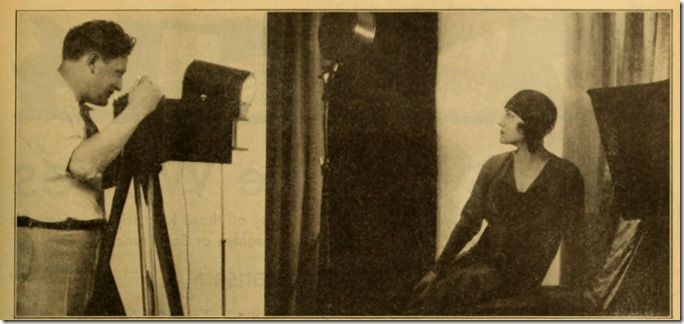
Russell Ball photographs Gloria Swanson, Picture Play Magazine, 1931.
By the early 1920s the Shubert Organization hired him for publicity stills for Sigmund Romberg shows “Innocent Eyes,” “Marjorie,” and “The Passing Show of 1923,” establishing a name as a Broadway photographer by 1923, per David Shields in “Still: American Silent Motion Picture Photography.” His cerebral, mercurial personality attracted many a stage and screen artist.
Ball worked as an independent celebrity photographer because he abhorred strict contract control and preferred working autonomously. He provided portraits for various print outlets of such silent stars as Alice Joyce, Alma Rubens, Lillian and Dorothy Gish, and Richard Barthelmess, and occasionally traveled west for special shoots for magazines like Photoplay. Motion Picture magazine featured many a glamorous portrait by Ball, dreamy and gorgeous.
Natacha Rmbova by Russell Ball, Motion Picture Magazine, 1924.
Ball’s attractive style caught the eye of Rudolph Valentino, who hired him to shoot portraits of he and his wife Natacha Rambova. Ball also shot atmospheric stills for Valentino’s film “Monsieur Beaucaire,” oozing in style through his elegant composition and theatrical lighting, and went on to produce images of Gloria Swanson for Famous Players-Lasky “Zaza.”
Metro-Goldwyn-Mayer, impressed with Ball’s work on “Zaza” and “Monsieur Beaucaire,” hired him as an independent East Coast stringer in 1925. As such, Ball shot some of the first stills of a newly arrived Swedish actress Greta Garbo when she arrived in New York. His simple but sultry portraits made artists attractive yet accessible.
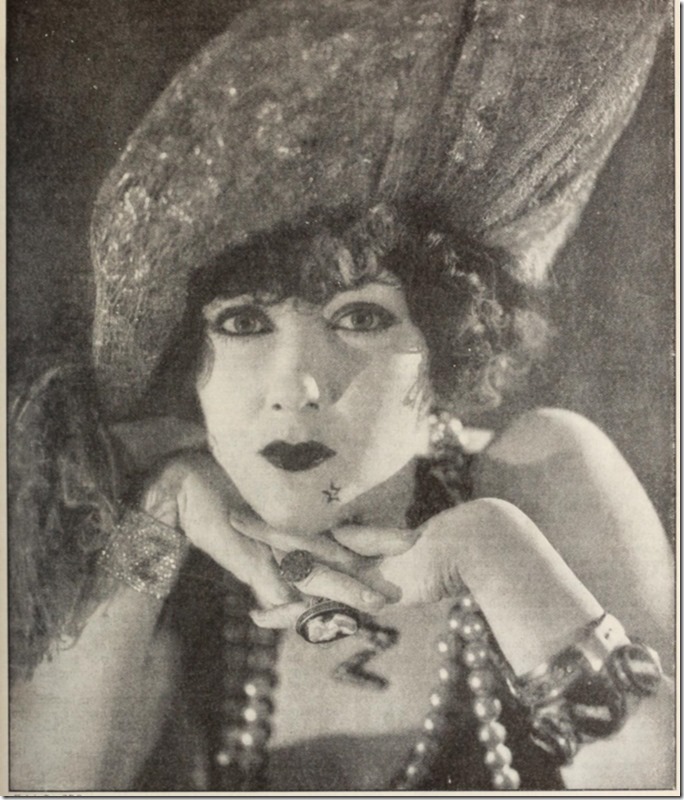
Gloria Swanson by Russell Ball, Picture Play Magazine, 1923.
By the late 1920s, Ball, his wife Gladys, and their children moved to Los Angeles, setting in Beverly Hills’ Benedict Canyon. He continued shooting portraits independently for magazines like Cinematographer’s Annual and Motion Picture Classic as well as stars like Warner Baxter, Lila Lee, and Gloria Swanson, and she hired him as stills and portraits photographer for her film, “What a Widow!”
The photographer drafted articles for fan magazines like New Movie Magazine, describing the perfect way to make portraits. Ball called photographs “jewels of memory, consolidation in separation, reminder of love and friendship.” As such, they should present individual as themselves, not replicas of some famous personality or star. As he declared, “Look like you…do not try to look like somebody else.” Ball described the goal of photography as coaxing out the real inner person.
Rudolph Valentino by Russell Ball, Motion Picture Classic, 1923.
Ball emphasized naturalism and harmonious surroundings, shot with little to no decoration such as bare backgrounds, or perhaps a little prop like a block of wood or dramatic lighting, to keep the focus on the subject. By natural, Ball meant little to no makeup, no elaborate hairstyling, no special dress or jewelry, just something rendering the person comfortable and relaxed. Expression is most important, think of pleasing and happy moments to bring joy and be less self-conscious.
The photographer suggested several techniques to add beauty and realism Ball stated a slightly open mouth “adds charm” to a portrait. Those being photographed should exhibit “arrested motion” not be set and stiff, with the photographer capturing them in spontaneous moments. A man should slightly frown in a business portrait, which added virility and strength to his look. Those with light colored eyes should never look directly into the lens but slightly away.
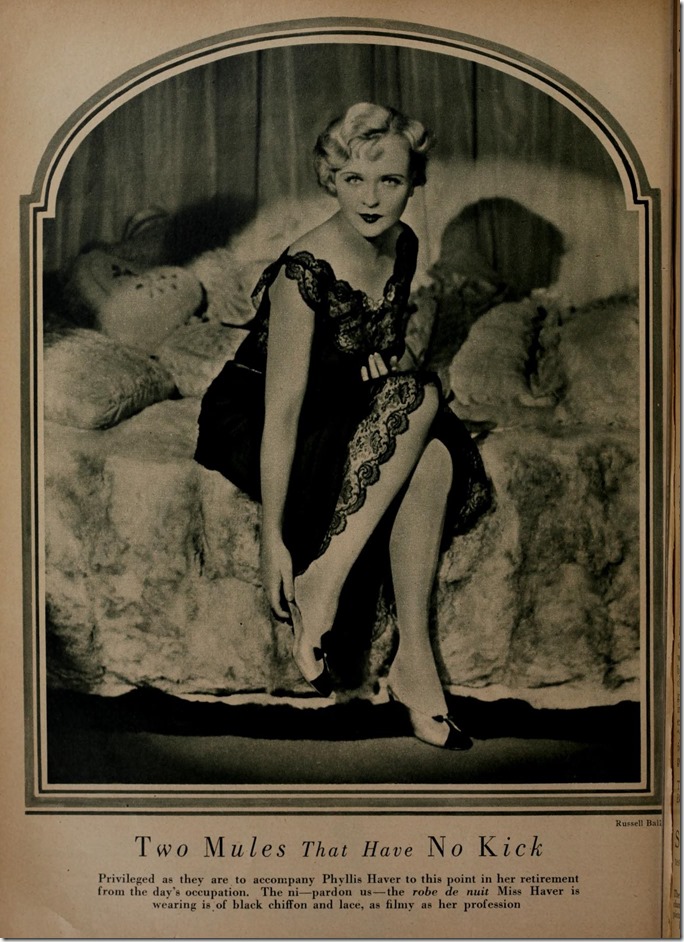
Phyllis Haver by Russell Ball, Motion Picture Classic, 1928.
As Ball also stated in a Picture-play article about celebrity portrait making, “Once a picture has appeared in print, it is immediately useless, because no longer exclusive.” He described how stars, unhappy with studio portraits, came to him in his messy, unpretentious studio every three months or so for new images to send out for publicity purposes. Ball would shoot around 75 to 200 images to select from, and then print anywhere from 500 to 1,000 prints for the stars to distribute.
Ball gave one word descriptions to some of his clients: Lilyan Tashman was “crystal,” Laura La Plante “dovelike,” Estelle Taylor “exotic,” and Evelyn Brent “mysterious.”
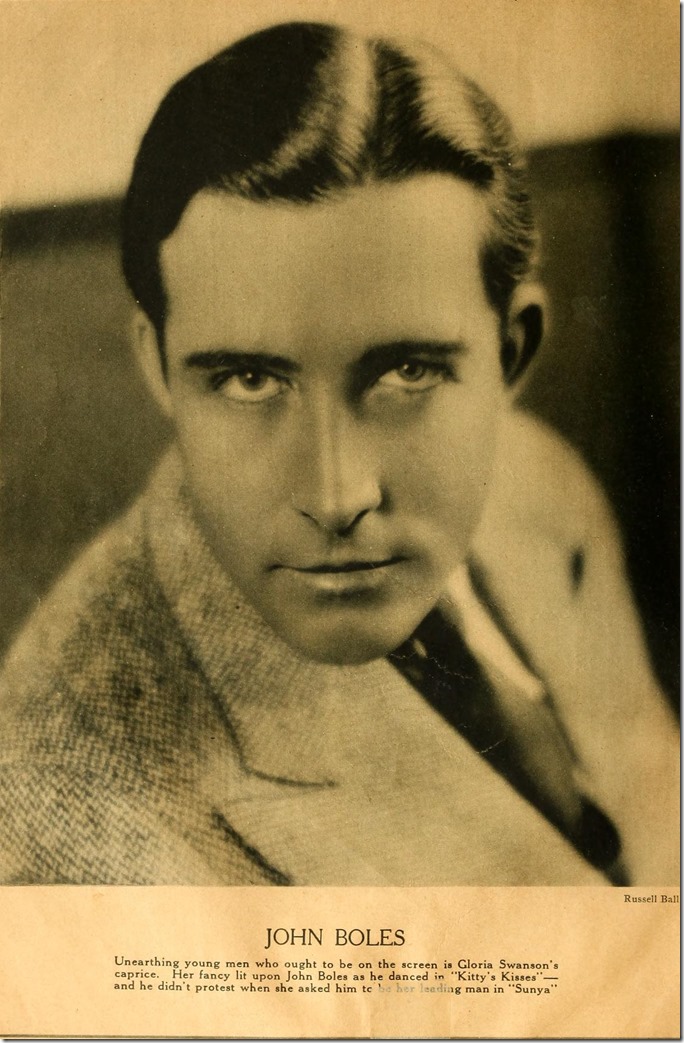
John Boles by Russell Ball, Motion Picture Magazine, 1927.
Ball was at MGM for a short time, leaving to open his own gallery at 9528 Brighton Way in Beverly Hills, where he shot images of both celebrities and wealthy patrons.
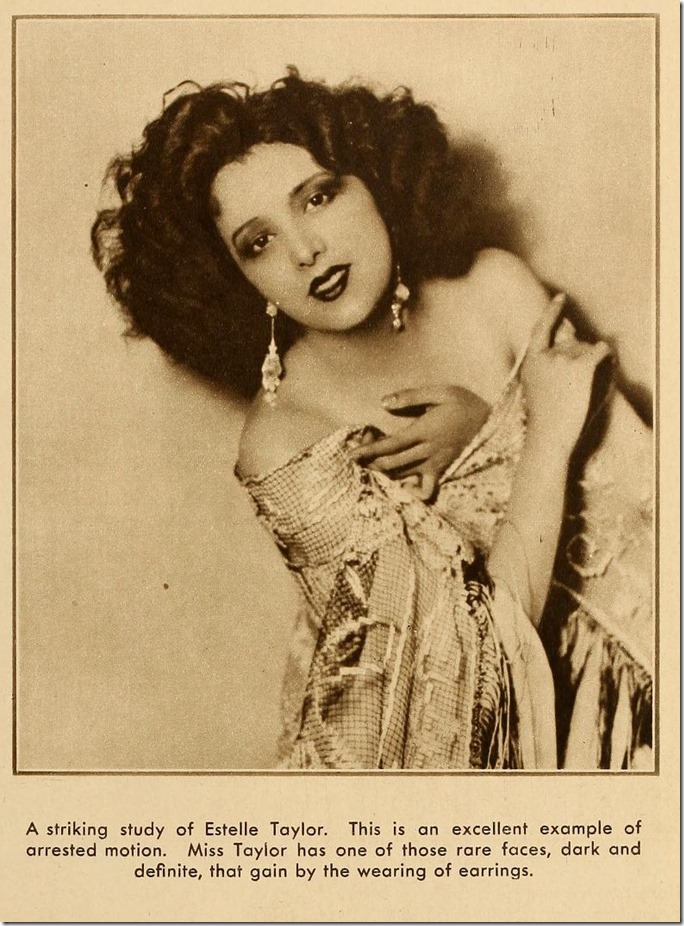
Estelle Taylor by Russell Ball, The New Movie Magazine, 1930.
Ball worked with his wife Gladys Hall in co-writing plays in 1932 as she continued her work as one of the most important film journalists of the time, co-founding Los Angeles Women’s Press Club. On June 12, 1942, Ball died of a heart attack at the age of 51, leaving behind his family.
Ball’s rich, glamorous portraits give a luxurious, sexy, but easygoing sheen to his celebrity clients, helping shape the glorious iconic star images of romantic beauty for the next several decades.

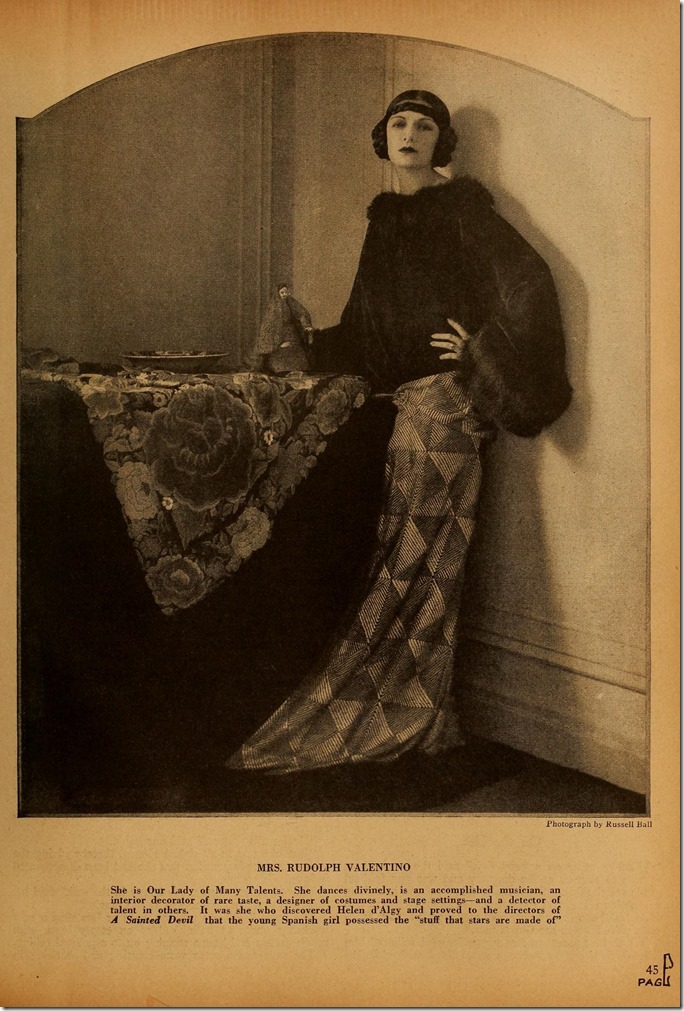
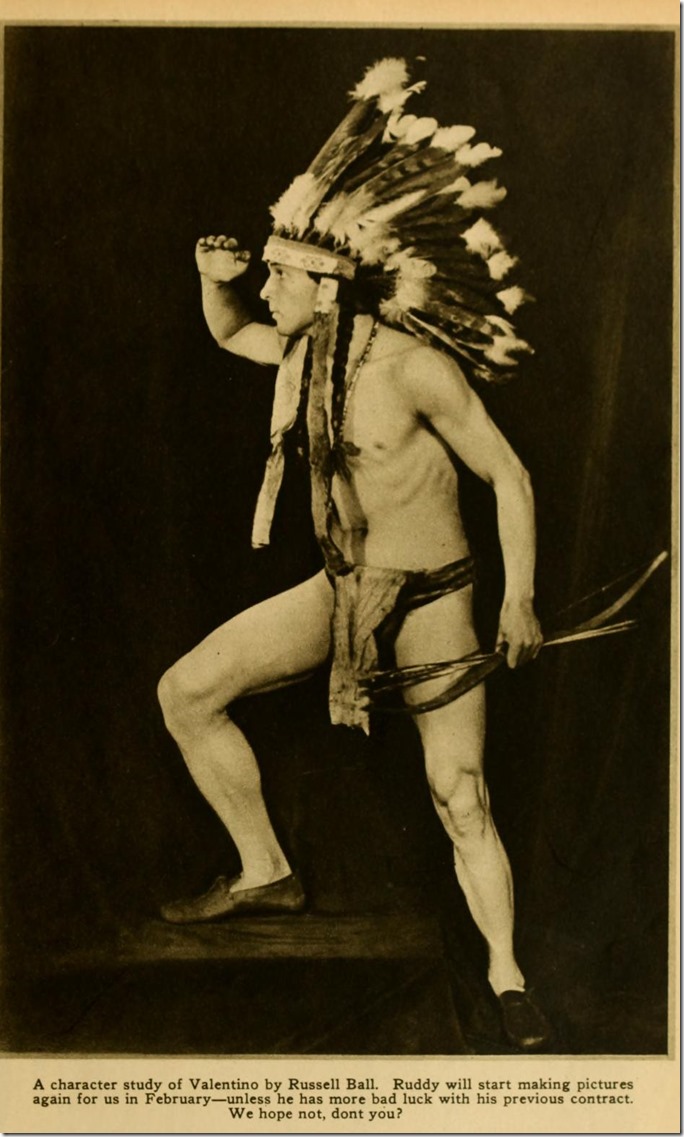

Lovely! I’ve never understood why everyone worships Clarence Sinclair Bull and George Hurrell when Albert Witzel, Ruth Harriet Louise and Russell Ball were often better.
LikeLiked by 1 person
Pingback: Father Christmas has been very generous this year! – That William Powell Site